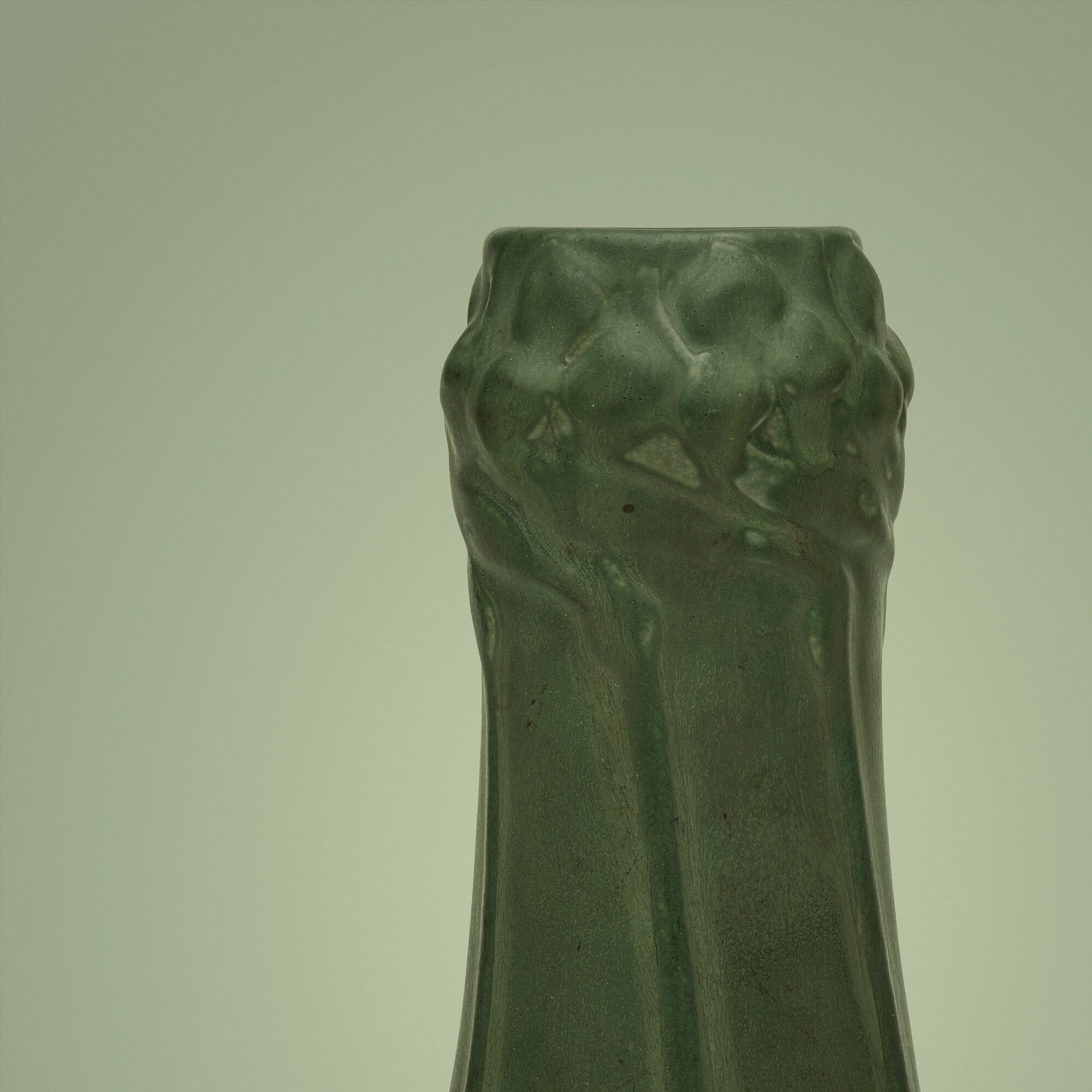211
211
USA, 1904
glazed earthenware 11¾ h × 5¼ dia in (30 × 13 cm)
glazed earthenware 11¾ h × 5¼ dia in (30 × 13 cm)
estimate: $1,500–2,000
result: $3,750
Incised signature, date and number to underside ‘172 AA Van Briggle 1904 V’.


The finished Van Briggle vase, graceful in shape, fascinating in decoration, and lovely in finish, stands by itself without even an imitation in the world of pottery.
George D. Galloway, Brush and Pencil, October 1901
Artus Van Briggle 1869–1904
Born to a long line of artisans on March 21, 1869 in Felicity, Ohio, Artus Van Briggle showed promise as an artist from a young age. At seventeen he moved to Cincinnati, a hotbed of American ceramics, to apprentice under Karl Langenbeck at Avon Pottery. By 1887 he was working at Rookwood Pottery where he expanded his skills in painting, modeling clay, and making molds.
Van Briggle’s star rose quickly at Rookwood. They sent him to Europe in 1893 to study at the Académie Julian and then the prestigious Académie des Beaux-Arts in Paris. His time in Paris proved to be both life-changing and formative; he met his future wife, Anne Lawrence Gregory, and developed an interest in fourteenth century Chinese Ming glazes during his trips to Paris museums. Van Briggle returned to Cincinnati in 1896 and resumed his work at Rookwood, while in his spare time doggedly attempting to revive the lost Chinese art of dead matte glazes.
By 1898 he had finally achieved success and a few pieces of his matte glaze pottery fired at Rookwood were shown to great critical acclaim. Professional triumph coincided with a worsening of his tuberculosis. It is unknown when he contracted the disease, but his declining health forced him to leave Rookwood for the warm, dry climate of Colorado Springs, Colorado in 1899.
Van Briggle continued his ceramic experiments in Colorado, designing, casting, and firing the pieces almost entirely by himself. His work began to appear in magazines and newspapers by the end of 1901, with critics praising both its quality and artistry. The individuality of his pottery, with its innovative combination of modeled Art Nouveau-inspired forms and masterful glazes, intrigued and excited viewers. He rapidly achieved international success; his entire twenty-four piece entry to the 1903 Paris Salon was accepted and he was awarded two gold, one silver, and twelve bronze medals. He then exhibited at the 1904 Louisiana Purchase Centennial Exposition in St. Louis, handily winning two gold, one silver, and two bronze medals, and would have won the grand prix if not for a rule prohibiting it being awarded to a first-time exhibitor.
Tragically, Van Briggle succumbed to tuberculosis during the St. Louis exposition. His wife, Anne, became president of the Van Briggle Company in 1905 and it went on to operate until 2012, at which time it was the oldest continually operating art pottery in the United States. Though the pottery achieved some successes after his death, it is widely agreed that the earliest pieces, those made during Artus’ lifetime, are of the highest caliber.
Auction Results Artus Van Briggle
Auction Results Artus Van Briggle for Van Briggle Pottery